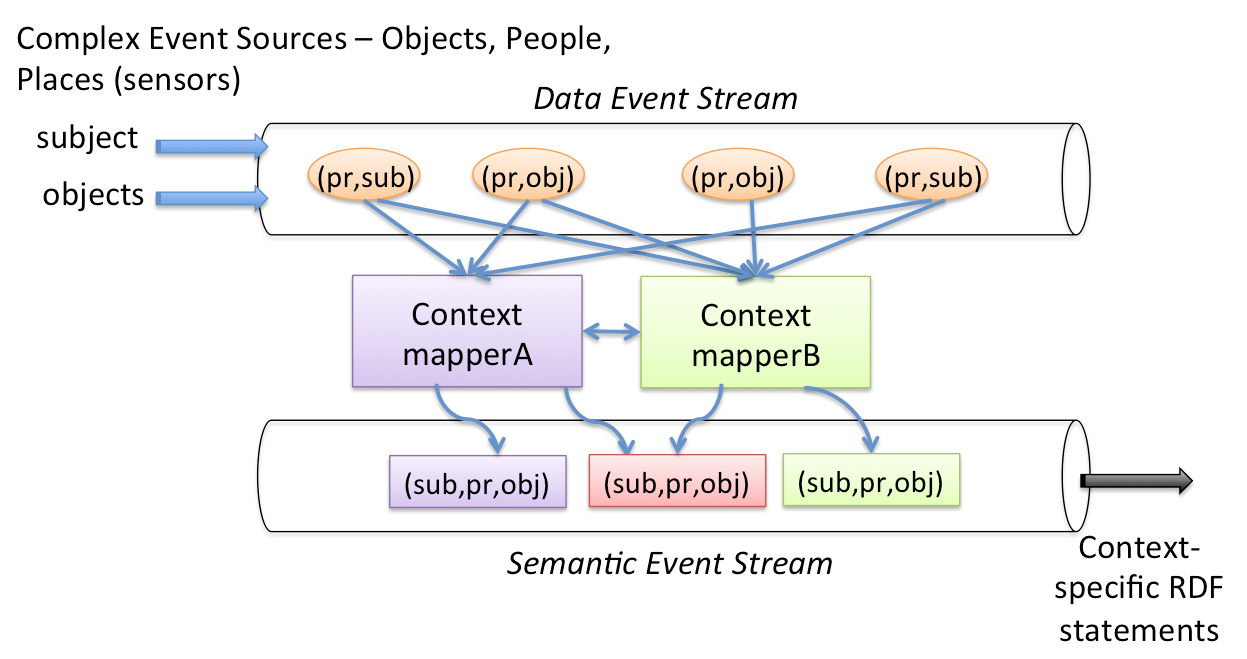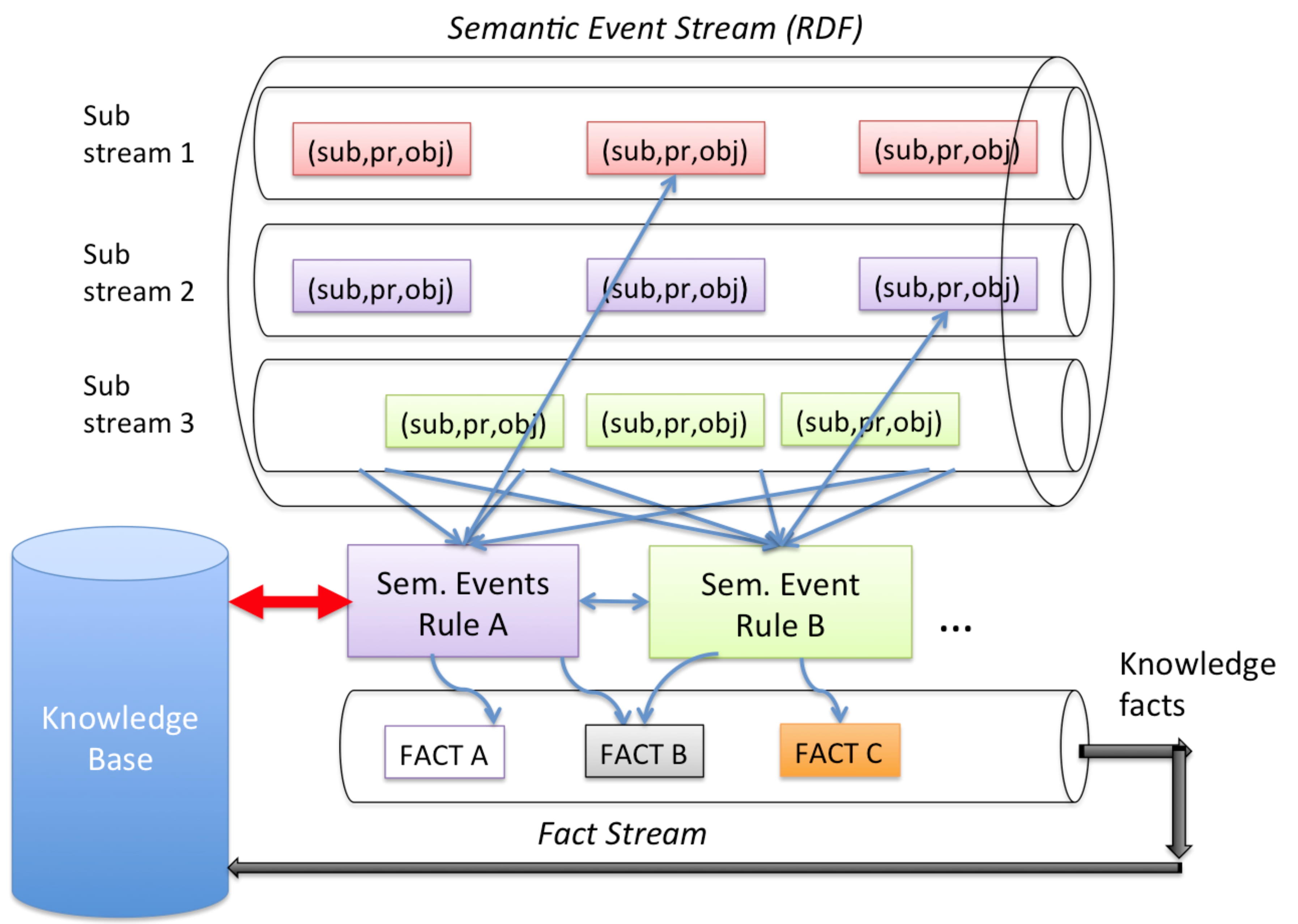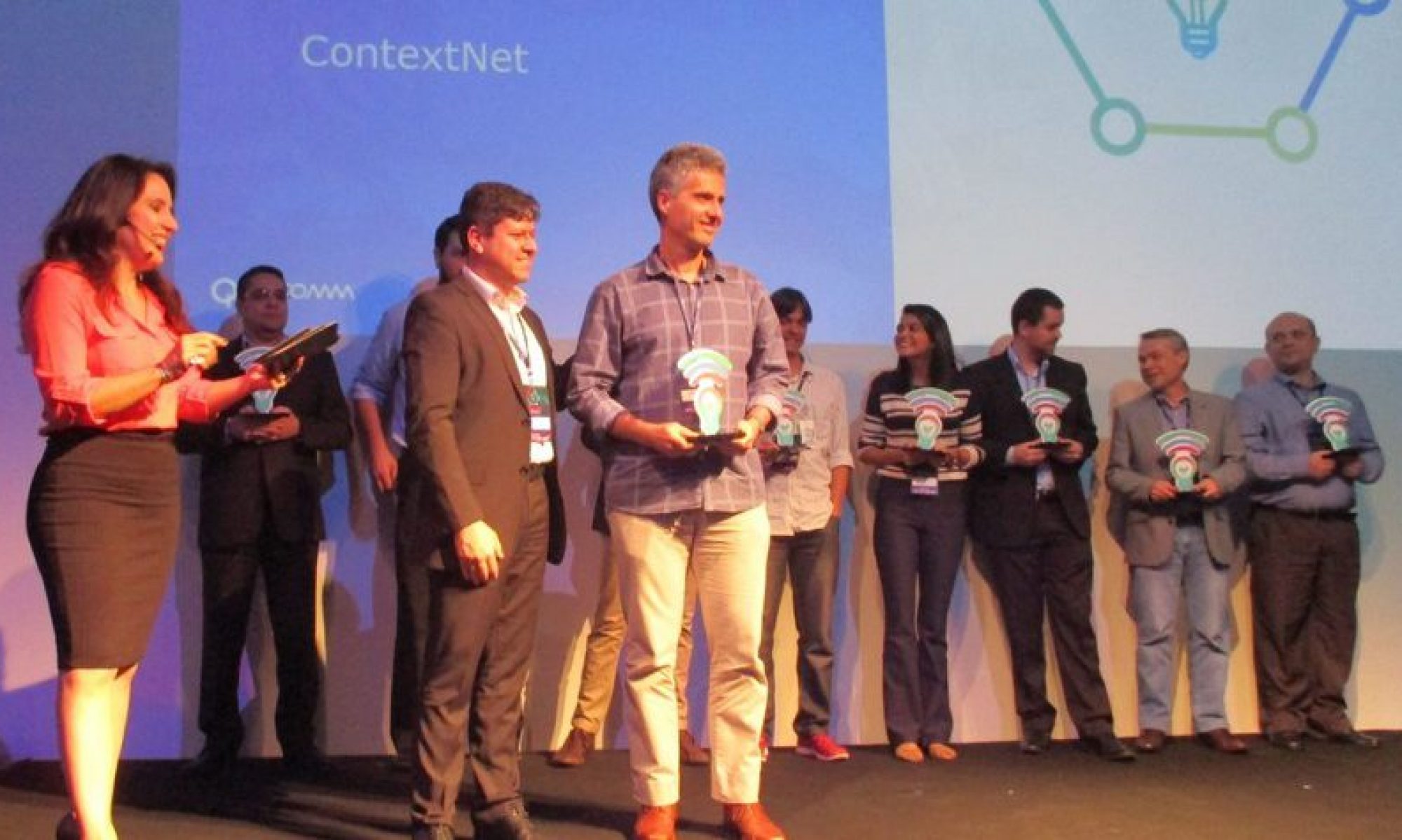As distributed IoT applications become larger and more complex, the pure processing of raw sensor and actuation data streams becomes impractical. Instead, data streams must be fused into tangible facts and these pieces of information must be combined with background knowledge to infer new pieces of knowledge. And since many IoT applications require almost real-time reactivity to the stimulus of the environment such information inference process has to be performed in a continuous, on-line manner. This paper proposes a new semantic model for data stream processing and real-time reasoning based on the concepts of “Semantic Stream and Fact Stream”. as natural extensions of Complex Event Processing(CEP) and RDF (graph-based knowledge model). The main advantages of our approach are that:
- it considers time as a key relation between pieces of information.
- the processing of streams can be implemented using CEP and that.
- it is general enough to be applied to any Data Stream Management System (DSMS).


According to ESMOCYP, in the first stage of stream processing (left), our approach transforms the stream of annotated data into a stream of RDF statements, and in the second stage (right), we transform the stream of RDF-triples into semantic rich facts, through a combination of RDF statements.

